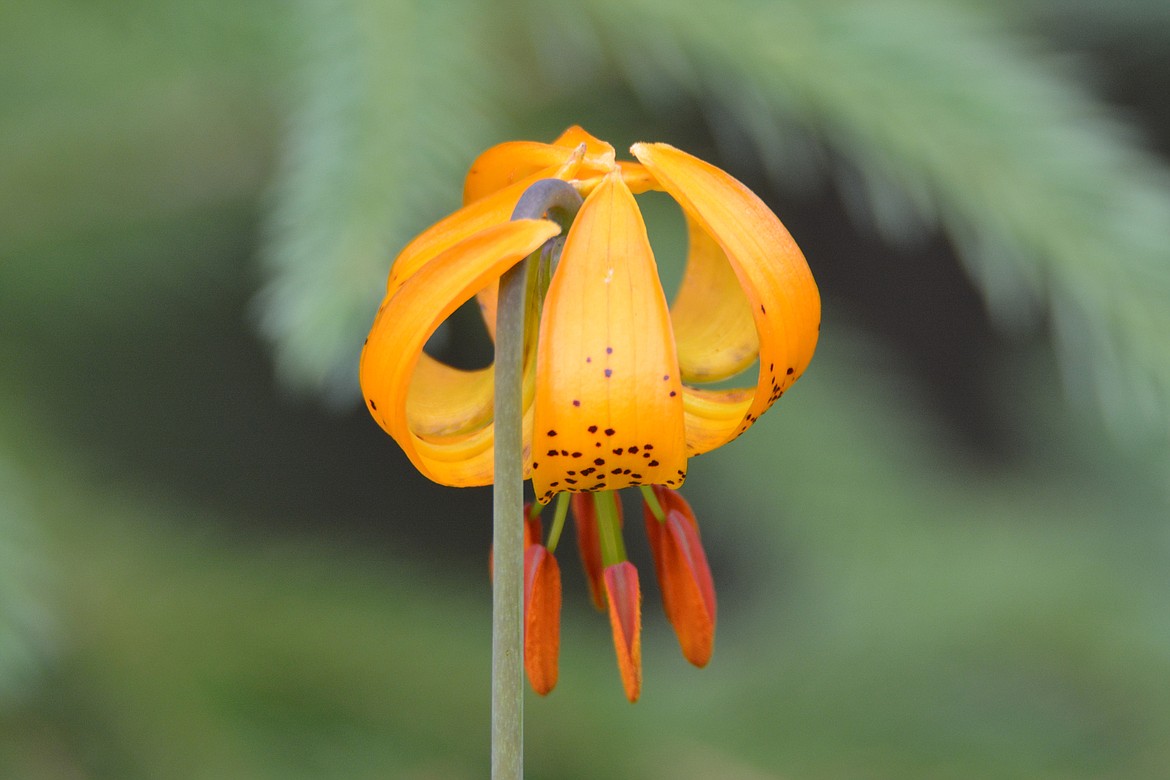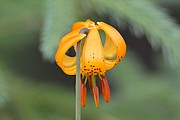Glacier lilies: A natural wonder of wildflowers
“Where flowers bloom so does hope”
— Lady Bird Johnson (1912-2007)
Recently when I was in the Selkirk mountain range on the east side of Burton Peak, I saw an abundance of wildflowers.
Wildflowers adorn mountains and valleys across Boundary County public lands in a rainbow of colors. Blooming at different times, hundreds of unique plants amaze nature lovers from early spring to late fall. Sometimes opening in massive displays, wildflowers can fill meadows, surround lakes and stretch across mountainsides. In purples, reds, blues and yellows, these wildflowers are a true natural wonder.
One of my favorite, the yellow glacier lily, paints mountain meadows with a carpet of yellow after the snow melts and throughout the summer. The glacier lily (Erythronium grandiflorium) is a wild relative of the garden tulip; other names for the glacier lily are snow lily, fawn lily, dogtooth violet and avalanche lily.
Meriwether Lewis of the Lewis and Clark expedition in the spring of 1806 recognized this flower (glacier lily) as a dogtooth violet, so he did not bother to examine it more closely, nor to describe it in detail. He mentioned it several times in his journal, perhaps because the plant was so widely known back home as a harbinger of spring that it could be used as a botanical calendar to mark the progress of the season.
The glacier lily is a perennial with a leafless flowering stem, six to 12 inches tall. It usually produces a single pale yellow to golden nodding flower. It has two broadly lance-shaped, shiny basal leaves four to eight inches long.
There are six stamens protruding from the center of the flower, of which the anthers are dark red, pale yellow, and sometimes white. There may be up to three flowers on the stem, but it is more common to find only one. The golden-yellow flower droops down with the petals curving backward and the red or yellow anthers hanging below. By late July, the leaves have withered, and the plant overwinters from August to June as an underground corm similar to a tulip bulb.
Glacier lilies thrive in subalpine meadows from southern Colorado to southern British Columbia and southwestern Alberta. They bloom as the snow melts, following the snow line as it recedes up slopes in the spring.
Glacier lilies provide food for a variety of animals, including ground squirrels, deer, and elk. Grizzly and black bears may affect plant distribution by foraging on the corms (plant storage organ); aboriginal humans also used corms as food. Bumble bee queens are the principal pollinators.
Check out some of your favorite wildflowers in the mountains of Boundary County.



